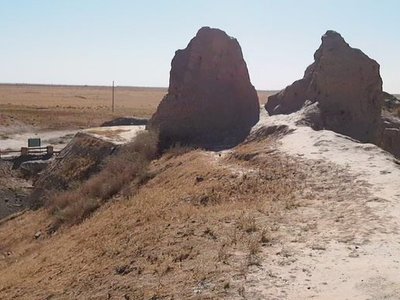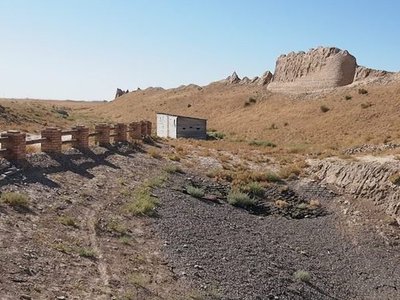Ruins of Sauran


Located in what is now South
Kazakhstan
, Sauran may have been originally settled as early as the seventh century. By the 10th century it was a flourishing metropolis, described by the medieval geographer Al-Maqdisi as a “large city surrounded by seven walls.” Archeologists were puzzled when they failed to find the seven walls in these ruins, until they found another nearby site and realized that the city moved sometime in the 12th or 13th century.
No one knows why the city was moved. Some believe that the original city was abandoned because of the presence of bubonic plague, likely brought from traders traveling the Silk Road. Others believe it was abandoned after it was conquered by Genghis Khan. However, it served as the capital for the Mongol White Horde through the time of Tamerlane, but it seems that as the empire declined, so did the fortunes of Sauran.
By the 14th century, Sauran was undergoing a resurgence, and was rebuilt on its current site. During its heyday, the poet Wāṣefi described it in the 16th century as “cheerful and bright, with soft invigorating air” and containing “all sorts of beautiful trees.” Sauran remained a key city in Central Asia until the 18th century, when the nearby city of Turkistan, 35 kilometers (22 miles) to the southeast, began to dominate the region.
The secret to Sauran’s centuries of prosperity in the desert is its extensive arrangement of underground irrigation canals. Known as a
kyariz
system, it used horizontal tunnels to take advantage of the natural flow from mountain aquifers and the confluence of three small rivers: Tastaksay, Aksay and Maydantal. Vertical wells were dug every 50 meters (164 feet) along the tunnels which allowed access to water and served as air vents for the slaves who dug the canals. Bellows were also used to pump fresh air underground for the diggers, who wore flotation devices made from pumpkin skins to protect against drowning during flash flooding.
The city was more recognizable for what was above ground, which included two towering minarets with unique construction. Made from brick with internal spiral staircases, they were made to sway, or at least appear to sway. Early written accounts suggest they were designed to amaze visitors and enhance the reputation of the city as a center of the Islamic world. Sadly, the towers collapsed in the late 19th century.
Rumors abound that J.R.R. Tolkien named the character Sauron in
The Lord of the Rings
after this ancient city with two towers, but in fact, “Sauron” is derived from Old Norse meaning “abominable.” Regardless, the ruins and history of Sauran stimulate the imagination as much as any fantasy story.